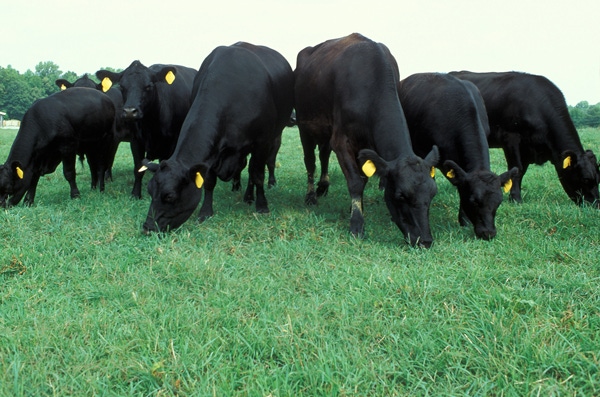January 10, 2012

Many areas received rain, but the general consensus from weekly reports by Texas AgriLife Extension Service county agents was that more is needed to keep wheat and winter pastures going.
The U.S. Drought Monitor backs up these observations. As of Jan. 3, the monitor still showed nearly 70 percent of the state as being under severe to extreme drought. However, this is an improvement over the situation at the beginning of October when 97 percent of the state was under severe to extreme drought.
The areas that have seen the most relief are the Panhandle and the central and northeast parts of the state, but even these areas remain mostly under moderate drought conditions.
Still, producers who have seen a lessening of the drought are grateful for the moisture and are capitalizing on it, according to AgriLife Extension agents.
"The winter wheat crop has had a good shot in the arm with the recent moisture events, but it is a long time to spring," said Rick Auckerman, AgriLife Extension agent for Deaf Smith County in the western Panhandle. "There is much discussion on what to plant for this spring: reduced corn acres and making up the acreage with cotton or possibly grain sorghum with the extended forecast being short on rainfall. Pastures for the stocker cattle are in very short supply, leaving cattlemen to supplement with hay or silage if possible."
"Winter wheat is trying to hold on, but more moisture is needed. Heavy supplemental feeding is being done on remaining cattle herds," said Kevin Brendle, AgriLife Extension agent for Dickens County, east of Lubbock. "Lots of producers sold most of their cattle in the summer."
"Wow! What a difference a little rain makes," said Philip Shackelford, AgriLife Extension agent for Austin County, west of Houston. "Since the beginning of December, Austin County has collected over 6 inches of rain countywide and more is expected through the end of Jan. Cool-season grasses have really responded to mild temperatures and good soil moisture, while winter legume fields are looking very good and most cattle producers have turned in on them to graze. The sell-off and total liquidation of many cattle herds has come to an abrupt halt as ranchers take a wait-and-see attitude before selling."
"Conditions are still dry, despite recent rainfall over the past two weeks,” said Randy Reeves, AgriLife Extension agent for Harrison County, north of Longview. "Winter pasture, as well as volunteer ryegrass, was making good to excellent growth with the mild temperatures. Cattle are in fair to good condition, and purchased hay as well as supplements continued to be fed."
"The county received about 0.25 inches of rain earlier this week," said Ron Holcomb, AgriLife Extension agent for Liberty County, northeast of Houston. "We are still behind, but every little bit helps. There has been some winter pasture that was planted in late November and early December that emerged and is growing with the recent small rains. There is a slower herd reduction with the recent rains."
"Recent slow rains improved forage growth and greened up pastures," said George Gonzales, AgriLife Extension agent for Webb County, Laredo. "Unfortunately, colder soil temperatures have not allowed for much forage regrowth at this time. Supplemental feeding is about the same with hay, molasses tubs and range cubes being used."
More information on the current Texas drought and wildfire alerts can be found on the AgriLife Extension Agricultural Drought Task Force website at http://agrilife.tamu.edu/drought/.
You May Also Like




